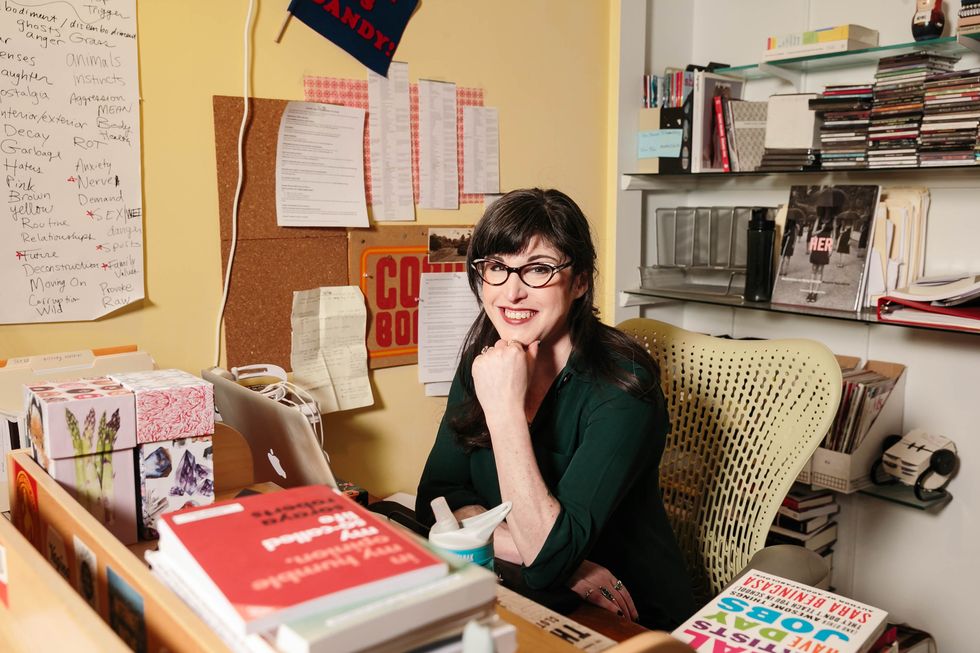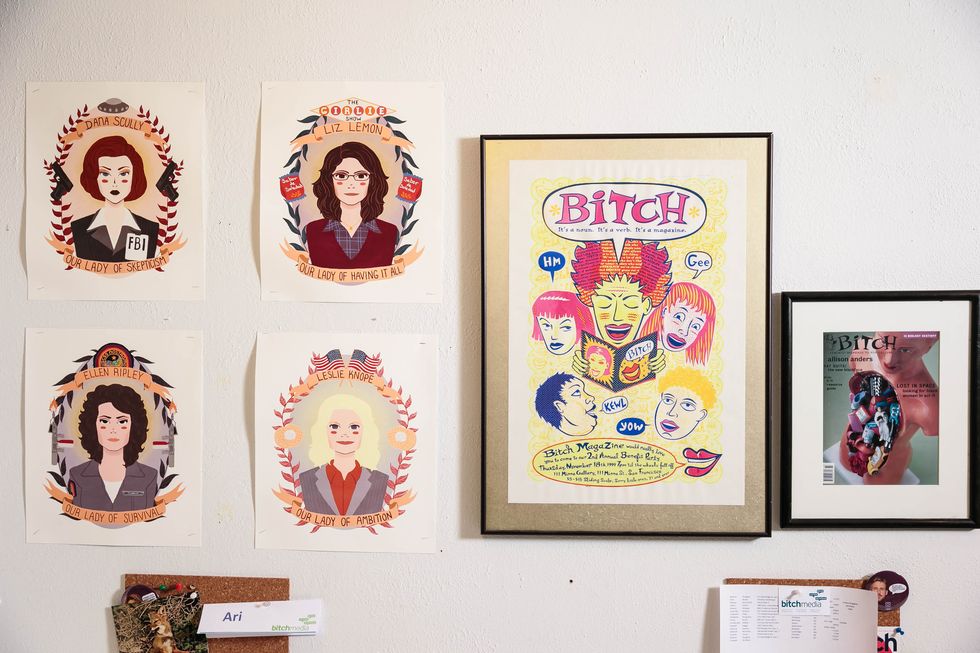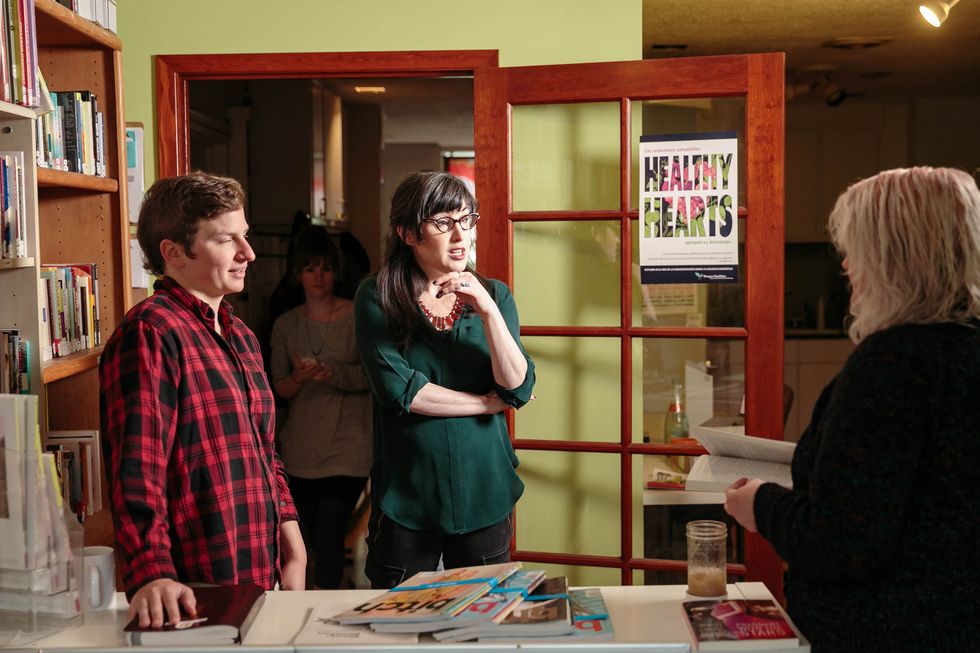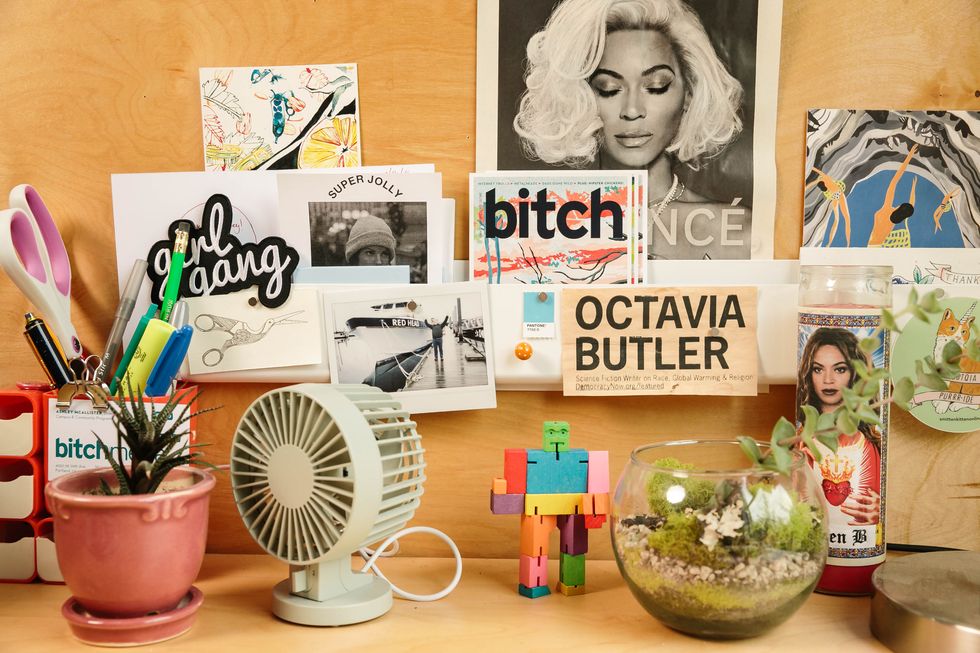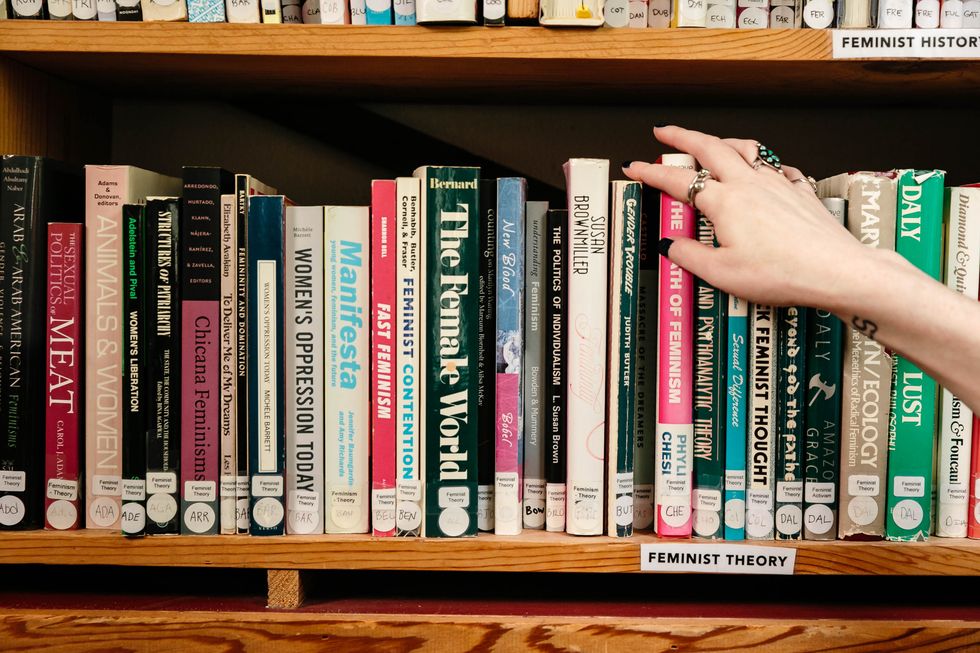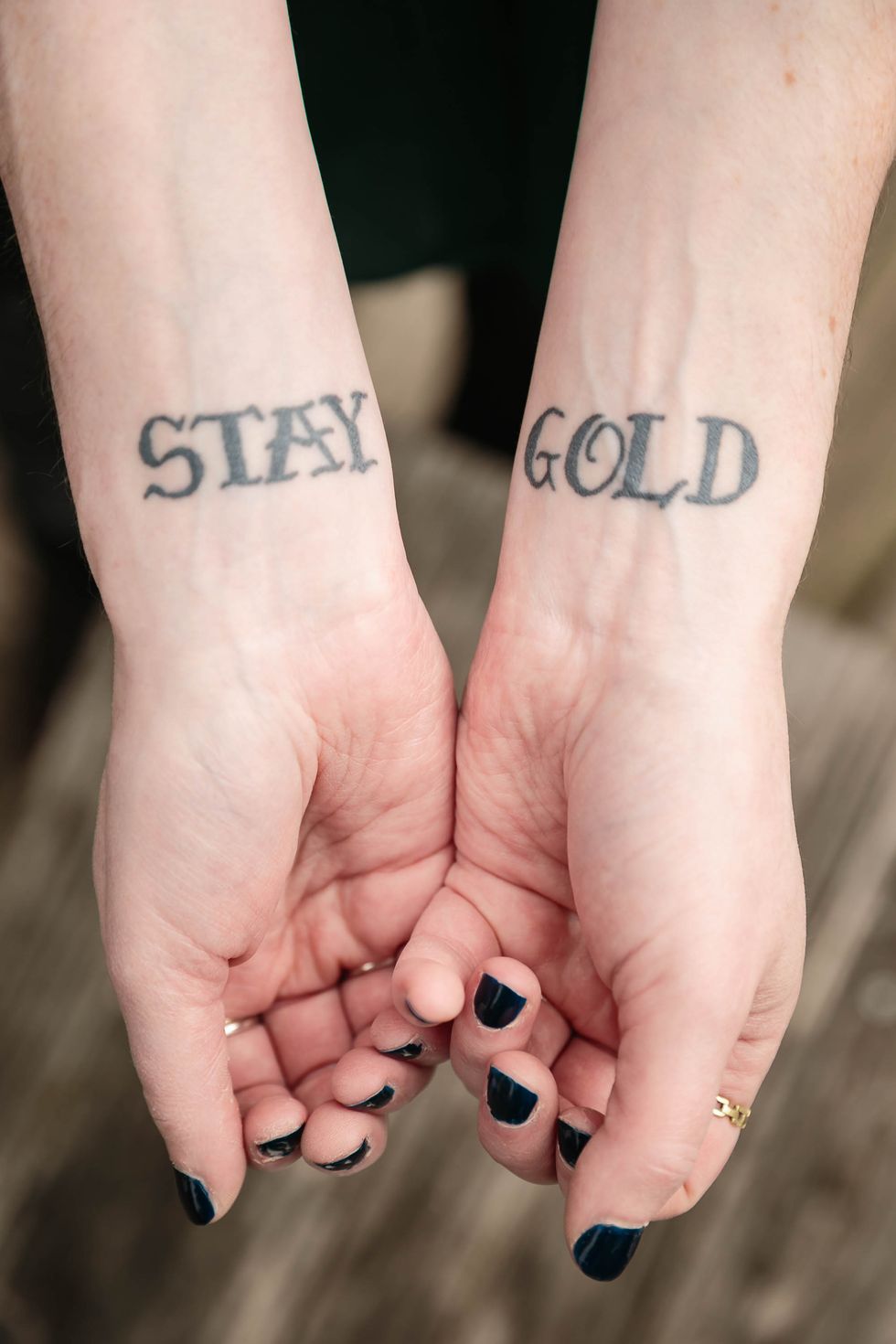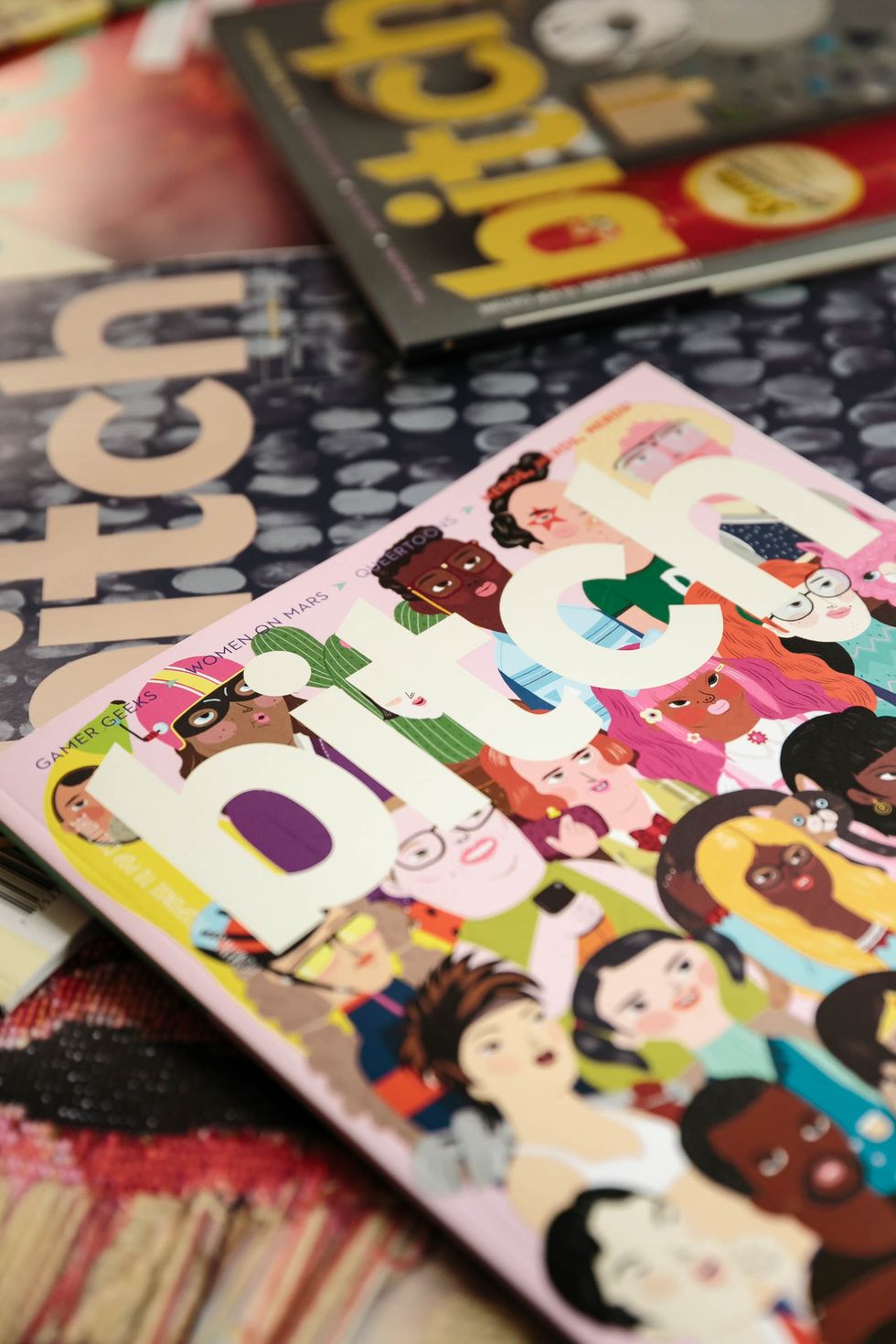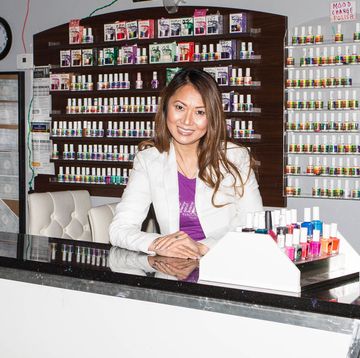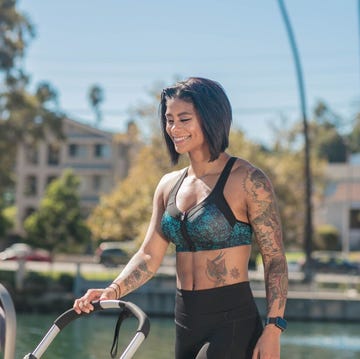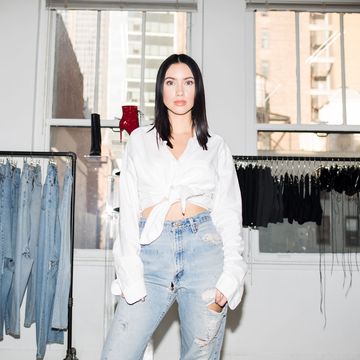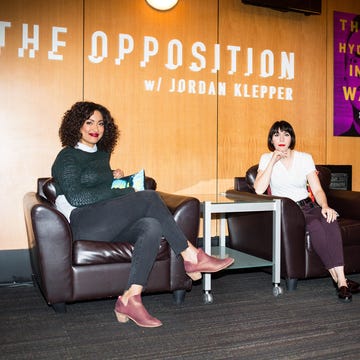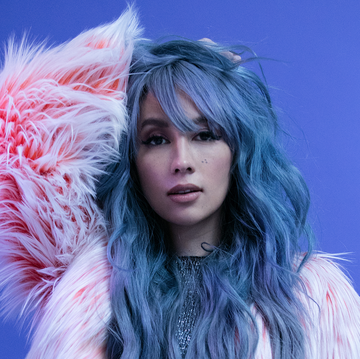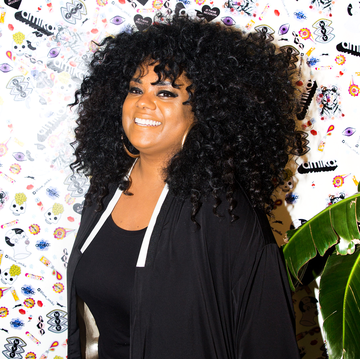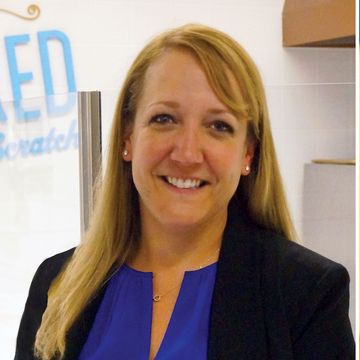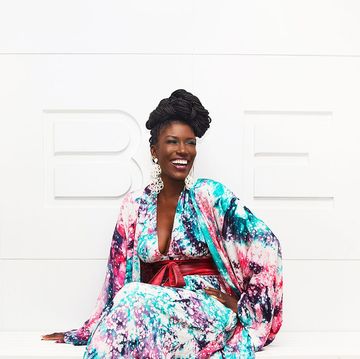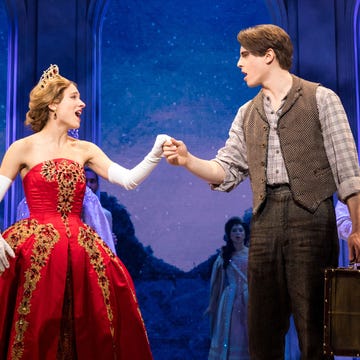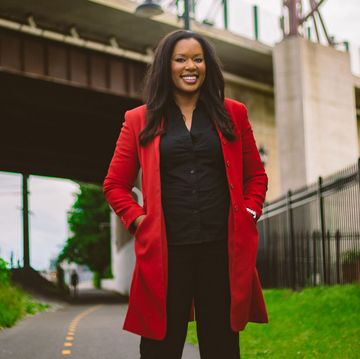In 1995, Andi Zeisler co-founded Bitch: Feminist Response to Culture, as a zine — self-published, small-circulation niche magazines — that was distributed out of the back of a beat-up station wagon. Twenty years later, that handmade zine has become Bitch Media, a nonprofit multimedia organization that produces a quarterly print magazine, a website, podcasts, and a college speaker series.
Zeisler is now reexamining the feminist movement in her new book, We Were Feminists Once: From Riot Grrrl to Covergirl, the Buying and Selling of a Political Movement (out May 3), which looks at the risk of feminism's current status as a mainstream commodity, even while women's rights are still so viciously under attack.
My mother was always very encouraging about my writing and drawing. I would make little storybooks about candy and pie. During high school in New York, I realized I wanted to work in magazines. I was obsessed with Spy and Details — before it became a men's magazine — and Spin. I loved the way they fused pop cultural reporting with political stuff. They had columns on AIDS and the Cold War, and these magazines introduced me to Susie Bright [one of the first feminist journalists to write about sexual politics and sex positivity].
Then Sassy magazine came out. It was changing the narrative for teen girls: Let's not focus completely on feeling insecure about our bodies, or staking our whole high school life on a prom date, or even caring about prom at all.
I saw on the masthead that they had interns. So I sent a hand-illustrated résumé and cover letter. I followed up with the executive editor several weeks later. We had the shortest phone interview and she was just like, "OK, come in on this day." I worked there for about four months in the fall of 1990 when I was 17. It was a very young staff, and the interns would come to editorial meetings in [founder and editor-in-chief] Jane Pratt's office. I spent a lot of time listening to writers discussing angles on stories. Sassy showed me what I wanted to do and very much what I wasn't interested in doing, which was working for corporate magazines.
I studied fine art at Colorado College in Colorado Springs and graduated in 1994. I didn't really have job prospects. One of my high school friends, Lisa Jervis, and I had kept in touch all through college. She decided to drive across country and spend the summer in the East Bay in Northern California. She said, "You should come West and see if you like it."
We packed up Lisa's grandfather's station wagon and drove to Oakland that summer. We moved into this crappy duplex in a really sketchy area. We had no heat for an entire winter, and feral cats were everywhere. Lisa and I took in two of them and they gave us ringworm.
I got a job at an art supply store in Berkeley. I worked there full-time and started taking community college classes in printmaking while also working on my writing. I wanted to write for the magazines that so greatly influenced me, but I had no connections, no clips, and I wasn't in New York, which was a liability for freelance writers at the time. Around this time, Sassy was actually bought by another publisher and all the original staff was fired. It reemerged as what Lisa and I called Bizarro Sassy.
Lisa and I started talking about creating our own zine. In college, I had discovered zines and was really interested in them. Many of them were about culture, written by people who were just delightfully obsessed with one or two subjects. Starting a zine seemed so much more accessible than sending off your clips to a faceless senior editor of a magazine who would not care.
We were disgruntled by the state of Sassy and by pop culture in general. The 1990s were a really interesting time because so many people, especially young women, had been brought up to believe that feminism had succeeded and was done, but realized that was not true at all. The treatment of Anita Hill during Clarence Thomas's confirmation hearings, for instance, was really galvanizing. There was the ongoing struggle to secure access to abortions. Some of the biggest male musicians in the world at the time — Kurt Cobain, the Beastie Boys — were standing up to address sexism in popular culture. But very little of this was visible in the cultural products being sold to women and girls.
In San Francisco, there was a place called the Cartoon Art Museum that hosted panels with creators of zines. We went, and learned the nuts and bolts of making a zine: how to get started, how to find distribution, and how to manage finances. We suddenly had a tangible goal. We felt like, we can do this.
Our inspiration for the name Bitch was how the word "queer" had been reclaimed by LGBT groups. We felt like "bitch" was a word that people used to describe women who spoke up for themselves or said things others didn't want to hear. So if we're going to be called bitch anyway, let's claim it right up-front.
Lisa did 80 percent of the writing. I did the rest of the writing and the illustration and the cover design. Our friend Ben Shaykin became our founding art director. He had the desktop publishing software and the knowledge of how to lay out the zine. There were definitely some moments when we were like, What are we doing? Did we paste up these pages backward? We took a zip disk with our mockup to a copy store, and copied and collated 300 copies. It cost less than $400.
It was the end of 1995 when the first issues were ready. We knew from meeting other zine people that the process was to call up [independent] bookstores and ask them to sell our zine [and split the profits]. We got in the station wagon with boxes of Bitch in the back and went to every independent bookstore we could find. Lisa at the time had a job at a PR company, so she also had a Rolodex of media contacts. She started shipping off complimentary issues to columnists at newspapers and magazines across the country. We also looked up every women's/feminist bookstore in the country and mailed copies to them.
I think we both had this hunch that we were not the only people interested in feminism's relationship to pop culture. Most of the writing about feminism and popular culture was in academia. We wanted to integrate feminist thought with the entertainment that had become such a big part of everyone's lives.
Our benchmarks were things like, Why does every girl on Beverly Hills 90210 use a baby voice when they talk to boys? Why is there still this sense that you're defined by your looks or who you hang out with? I wrote about the female artists of early MTV — Grace Jones, Pat Benatar, Chrissie Hynde — and how they created what would go on to be lasting archetypes for female musicians in the video age.
Our expenses were very small. We were writing and designing it ourselves, and printing and mailing didn't cost that much. In the first 10 or so issues, we had little clip-out subscription coupons. The first subscription price was $12 for four issues, and later it went up to $15. We made money right away on newsstand consignment.
In late 1998, we started talking about growing Bitch [from two to three issues per year] into a quarterly magazine [with more content]. I was working as a textile designer for Pottery Barn and I also had a lot of freelance jobs. There were several years where I was working three different jobs, and doing Bitch evenings and weekends. It was becoming a source of burnout. There was this sense that there was going to be a point at which we're either not going to do this anymore, or we're going to go whole hog with it.
There was a nonprofit organization called the Independent Press Association that helped project expenses and profits for [startup media]. We went to them, and they reviewed our financials, concluding that we could conceivably quit our day jobs and create a sustainable business. They gave us a couple of loans to get started. We quit our well-paying day jobs with health insurance and went for it.
The first issue we did full-time came out in 2001. We grew our subscription base with direct mail, in which we traded subscriber lists with other magazines, such as Bust and Mother Jones. We'd send a snappily designed insert with these magazines that were like, "Hey, if you like this, you might like us!" With one or two of those campaigns, we were able to multiply our subscribers [from a few thousand up to about 10,000].
At that time, we were also doing a lot of newsstand sales, which had become a reliable way to bring in money [since this is how most people bought magazines]. We created a house ad asking for angel investors. We grew our staff to about five employees, but we could only offer part-time jobs and no health insurance. We slowly expanded from 2001 to 2006 amidst a lot of change. Lisa left the organization to take a different career direction. The Bay Area in general was becoming a harder and harder place to survive; we were getting priced out.
I decided to move Bitch to Portland in 2007. It felt like the Bay Area when we first had moved there — very DIY-friendly and more affordable. This was right when the recession was starting and when the magazine industry was bottoming out. The only thing that saved us was that we didn't depend on ads because we were a nonprofit.
We beefed up our web presence, started doing podcasts, launched a college speaker series called Bitch on Campus, and started hosting events. We brought on a development director who knew more than we did about getting grants and cultivating major donors. We rebranded as Bitch Media in 2009 to represent all these different aspects of our media business.
As a nonprofit that is reader-supported, our budget has actually doubled over the past few years, which echoes our feeling that a feminist response to pop culture is still something that's needed. Readers, members, subscribers, donors, and like-minded sponsors provide just under $1 million in yearly support. Our print quarterly has a circulation of 80,000, and our online readership is nearly 5 million [unique visitors] each year. We have 13 full- and part-time staff working at our headquarters in Portland, as well as hundreds of freelance writers and designers who contribute on every platform. We also have four writing fellows this year and quarterly interns.
I feel incredibly lucky to have gotten to do something I love for this long, but in a sense, I'm sad to say we're still around. We would have liked to put ourselves out of business in 20 years as a result of an evolved culture. In a lot of ways, pop culture has gotten a lot more feminist and a lot more thoughtful. It is constantly frustrating that we're in this two-steps-forward-one-step-back dynamic in terms of gender equality and talking about feminism as something that's valid. In another 20 years, I hope there will not need to be organizations making sure feminism is understood and believed in.
Get That Life is a weekly series that reveals how successful, talented, creative women got to where they are now. Check back each Monday for the latest interview.
Follow Heather on Twitter.
